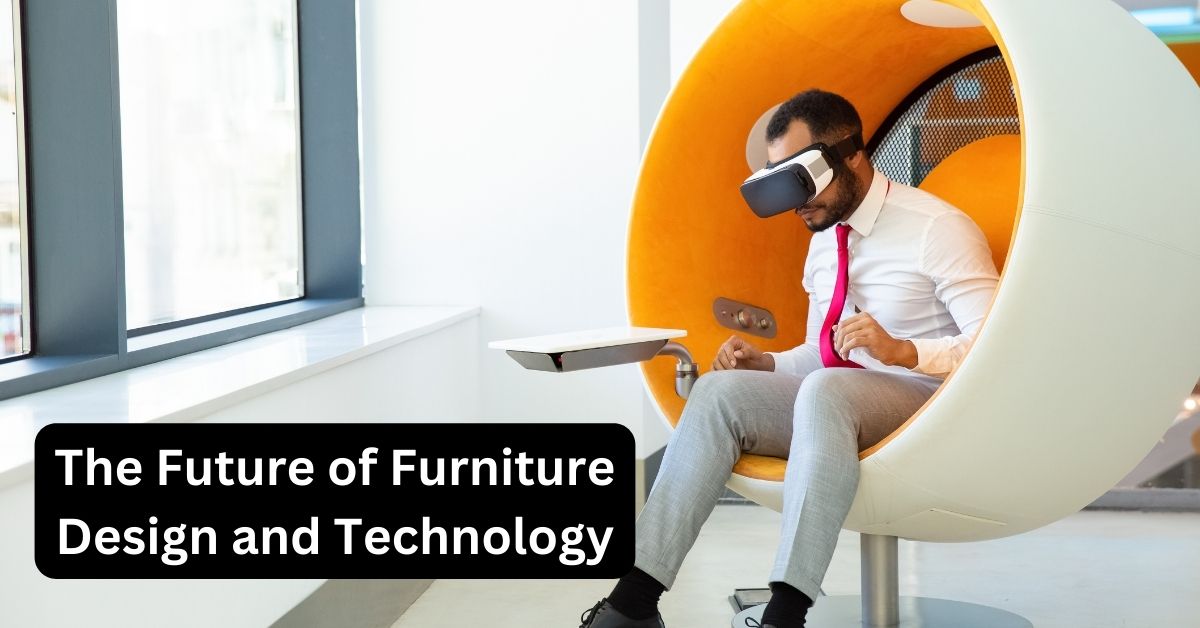Uncategorized
The Future of Furniture Design and Technology
Furniture design has come a long way since the first rudimentary pieces of furniture were created thousands of years ago. Over time, furniture design has evolved to become an art form, with designers constantly pushing the boundaries of creativity and innovation. Today, the world of furniture design is in the midst of a revolution, as new technologies and design concepts are changing the way we think about furniture. In this blog post, we will explore the future of furniture design and technology, and how it is shaping the way we live, work, and play.
Designed Furniture:
Designed furniture has always been a symbol of status and luxury. In the past, only the wealthy could afford to have custom furniture made, but today, thanks to advancements in technology, designed furniture is becoming more accessible to the masses. With the rise of 3D printing technology, it is now possible to create custom pieces of furniture at an affordable cost. This has led to a boom in the designed furniture market, with designers and manufacturers competing to create the most unique and innovative pieces.
One of the key trends in designed furniture is the use of natural materials. Designers are increasingly using sustainable materials like bamboo, cork, and reclaimed wood to create furniture that is not only beautiful but also environmentally friendly. Another trend is the use of modular furniture, which can be customized to fit any space or need. Modular furniture is versatile, functional and stylish, making it perfect for modern living.
Future Furniture:
Future furniture design is all about innovation and creativity. Designers are exploring new materials, shapes and textures to create furniture that is unlike anything we have seen before. One trend that is set to revolutionize the furniture industry is the use of smart materials. Smart materials are materials that can change their properties in response to external stimuli, such as temperature, light, or pressure. This means that furniture made from smart materials can be transformed into different shapes and sizes, making it adaptable to different needs and spaces.
Another trend in future furniture is the use of 3D printing technology. 3D printing allows designers to create complex shapes and designs that were previously impossible to achieve using traditional manufacturing methods. This has opened up a whole new world of possibilities for furniture design, with designers experimenting with new shapes, textures, and colors.
Futurism Furniture:
Futurism is a design movement that originated in Italy in the early 20th century. It is characterized by its emphasis on speed, technology, and modernity. In the world of furniture design, futurism is all about creating furniture that is sleek, minimalist, and functional. Futurism furniture is designed to be both beautiful and practical, with an emphasis on clean lines, geometric shapes, and bold colors.
One of the key features of futurism furniture is its use of new materials. Designers are exploring materials like carbon fiber, aluminum, and other lightweight metals to create furniture that is not only durable but also aesthetically pleasing. Another feature of this furniture is its use of technology. Futurism furniture often includes features like built-in charging stations, wireless connectivity, and other high-tech features that make it easy to live and work in a modern world.
Furniture Technology:
Technology is playing an increasingly important role in the world of furniture design. From smart materials to 3D printing, furniture technology is revolutionizing the way we think about furniture. One of the key areas where technology is making an impact is in the development of new materials. Scientists and designers are exploring new materials like graphene, aerogel, and other advanced materials that have the potential to revolutionize the furniture industry.
In conclusion, the future of furniture design and technology appears to be incredibly promising. With the advent of cutting-edge technology such as 3D printing, augmented reality, and smart home integration, furniture designers have the ability to create truly innovative and customized pieces. Futurism furniture, which emphasizes functionality, sustainability, and futuristic aesthetics, is likely to become increasingly popular as consumers seek out unique and sustainable designed furniture.
Furthermore, the integration of furniture technology has the potential to revolutionize how we interact with our homes and the objects within them. Smart furniture that responds to our needs and preferences could greatly enhance our quality of life and make our homes more efficient and comfortable. As designers continue to push the boundaries of what is possible with technology and design, the future of furniture is set to be an exciting and transformative one.

